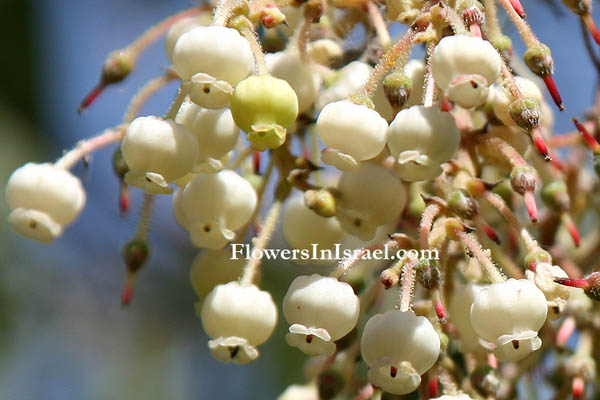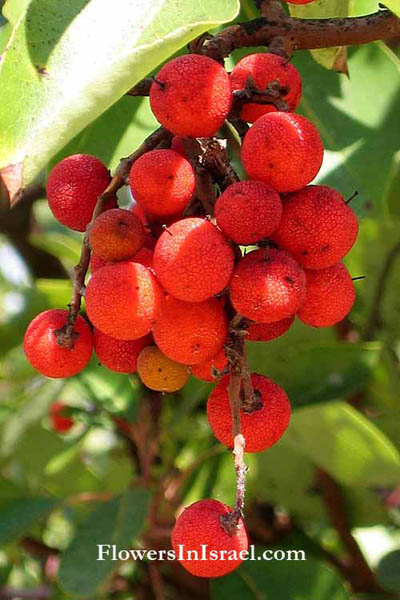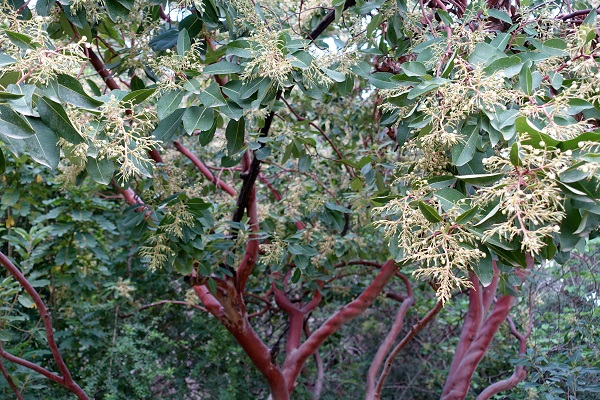Hebrew: קטלב מצוי, Arabic: جناء أحمر, Janà ahmar
| Scientific name: | Arbutus andrachne L. | |
| Common name: | Eastern Strawberry tree | |
| Hebrew name: | קטלב מצוי | |
| Arabic name: | القطلب العثكولي, alqatlab alethkuliu | |
| Family: | Ericaceae, Heath or heather family, אברשיים |

|
| Life form: | Tree, evergreen | |
| Stems: | Irregular branches, red flaking bark; young twigs glabrous | |
| Leaves: | Alternate, petiolate, oval, 3-6cm wide, less than twice as long as wide, entire, smooth margin | |
| Inflorescence: | Flowers 5-merous, in terminal, bracteate panicles; bracteoles absent | |
| Flowers: | White, hermaphrodite (have both male and female organs) calyx 2-5mm, with ovate-rhombic, acute lobes | |
| Fruits / pods: | Oval, red berries full of flat seeds | |
| Flowering Period: | March, April | |
| Habitat: | Mediterranean maquis and forest | |
| Distribution: | Mediterranean Woodlands and Shrublands, Montane vegetation of Mt. Hermon | |
| Chorotype: | Mediterranean | |
| Summer shedding: | Perennating |

Derivation of the botanical name: Arbutus, the strawberry tree. andrachne, the Greek name for Arbutus andrachne. The Hebrew name: קטלב, katlav under the influence of Arabic: قطلب, qatlab.
Today Arbutus andrachne is known as a small shrub or small tree, but archeological evidence shows that specimens of a considerably greater stature, sufficient to provide structural building timber, are likely to have been avaiable in the past. The Arbutus andrachne remains of a beam supporting the roof of the "Sunken Room" at Sidon, Lebanon, were grown c.1390-1120 BCE (Asouti, E. and Griffiths, D., the "Sunken Room" at Sidon (2003)). The Gaullic bishop Arculf, who lived in Jerusalem from 679 to 688, describes the Arbutus andrachne as follows: There was on the road a small tree bearing a fruit somewhat bigger than our largest cherries, and of the shape and taste of strawberries, but a little acid. It is pleasant to eat ; but, if a great quantity be eaten, it mounts to the head, and intoxicates. It is ripe in November and December. See the list of Medicinal herbs in Israel, the parts used and their medical uses to treat various diseases. 

|